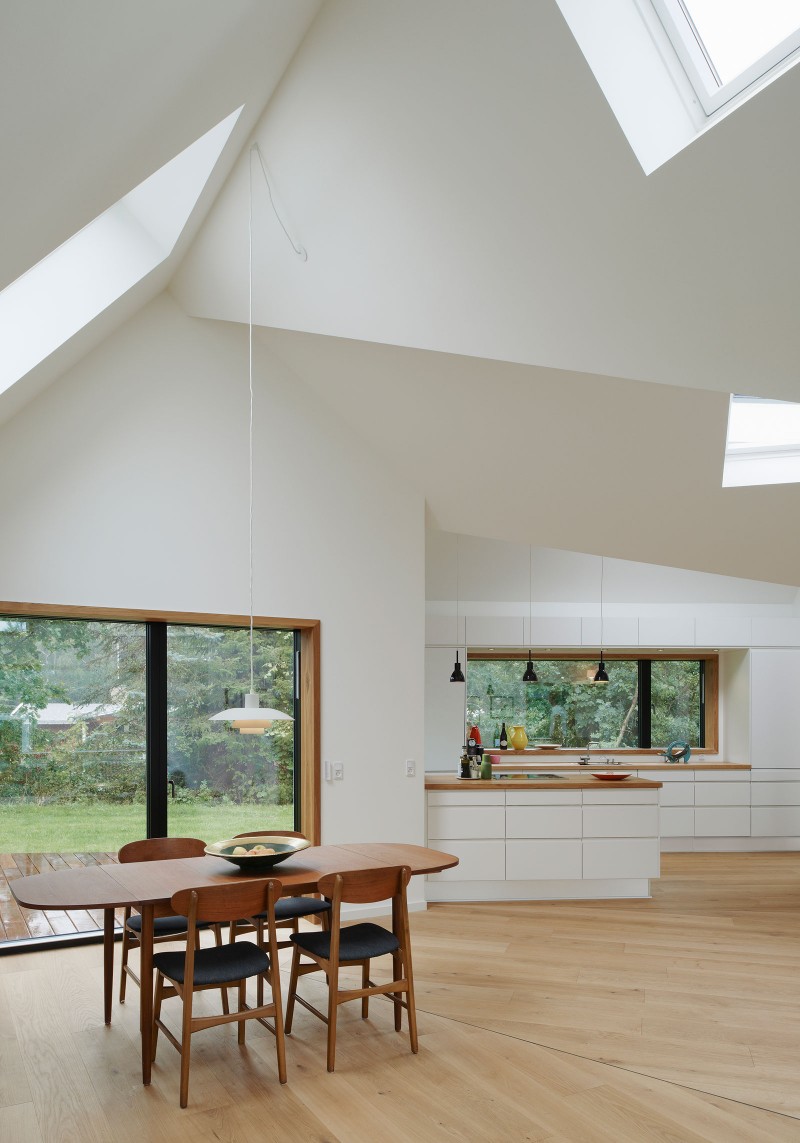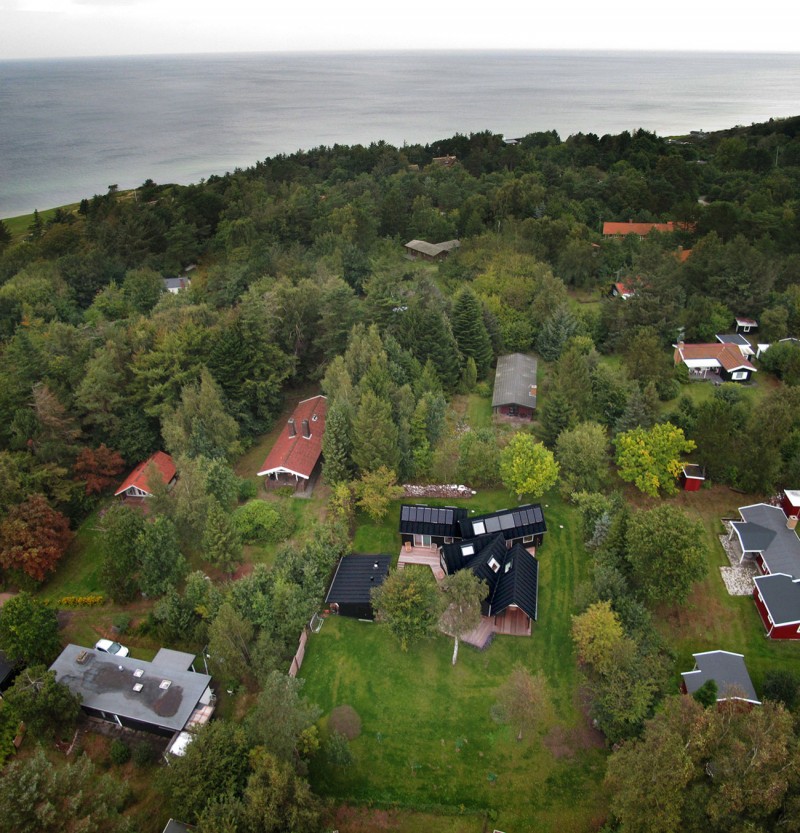Village House is located in northern Sjælland, Denmark and was constructed by Powerhouse Company.









Village House by Powerhouse Company:
Powerhouse Company was asked to design a weekend house for a young family in northern Sjælland, Denmark. Village House is an exploration on the possibilities of the Summer cabin, the traditional Danish vacation home. While keeping the cabin’s footprint small, spatial as well as sustainable, there is a wide range of spatial possibilities, by using a five-fingered floor plan.
Keep it in the family
The house is a cluster of five wings, like miniature cabins. These fan out like a hand spreading five fingers over the site, generating a variety of views, light effects and outdoor areas. This variation means the house provides an enjoyable environment all year round and at all times of day. For example, a large window above the living room allows sunlight to bathe the dining table at around midday.
Summerhouses are traditionally family spaces, but when children grow older they need more independence from their parents. Hence the ‘village of cabins’ organisation, with radiating individual spaces that are united in the centre. Each member of the family effectively has the option of privacy when they need it. Meanwhile a star-shaped central space, uniting the living room and kitchen, forms the shared area which nevertheless offers pockets of seclusion to spend time alone while still in the family circle.
This solution faithfully reflects the rather different desires of the family members. One wanted a picturesque, cosy and archetypal summerhouse, while another wanted a spacious and contemporary feeling. Both desires are united in the design.
A certain frontier feeling
In basing Village House on the classic Danish summerhouse, while adding modern ideas of space, Powerhouse Company has created a contemporary harmony. The elementary wooden structure has a pitched roof, and it is black, the most discreet colour in nature, like the dark shadows in the surrounding woods. Inside, the uniform white surface maximises the northern light.
The rustic but modern solution is low maintenance, which is more important for a holiday home than offering lots of space. From an architectural point of view, its close relationship to the context is especially significant in a holiday home. The house contrasts with the routine home of the clients, and provides the basis for a separate lifestyle. Isn’t that what we are looking for when we go on holiday?



